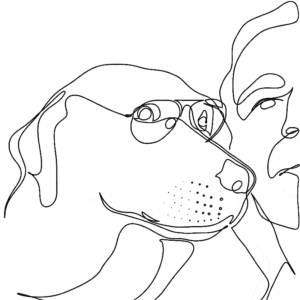While the Blessed Virgin Mary has a very visible role to play in the season of Advent, she is less prominent in Lent. She acts behind the scenes, so to speak, accompanying us on our penitential journey, leading us to the apex of the season, which is the Hill of Calvary, where she stands interceding for us with her divine Son. During Lent, Mary helps us to undo the knots and obstacles to grace in our own lives so that we can stand with her at Calvary and participate in Christ’s redemption of the world.
Our Lady is unique in the history of the human race. Without the benefit of a divine nature like her Son, she is the sole human being who never sinned. This is an astonishing reality if we take time to contemplate its significance. Yet, Mary called God her Savior (v. 47); she knew that to be preserved from sin was the same as being redeemed from sin. She thus identifies herself with the rest of sinful humanity. Her total cooperation with God’s grace in her life means that she has a unique ability to undo the ravages of sin in the lives of sinners like us.
The Distortions of Sin
We bear the sad legacy of Adam and Eve and carry with us a history of sin that needs to be unraveled, atoned for, redeemed. In the most basic sense, sin distorts our souls. Sin is “contrary to reason” and “lies in the human heart” says our catechism (1872-73). If we are honest with ourselves, we will recognize that each of us has our own personal legacy of sin, a history of sinful behaviors and attitudes, which affects our relationships with God and neighbor.
Lent offers us the opportunity to examine our souls deeply and confront that personal legacy of sin. To do so, we turn to Our Lady, the Undoer of Knots , the one who has no history of sin whatsoever. She will help us make this deep examination in order to open a wider avenue to Christ’s grace in our souls.
A Program of Light
During Lent, let us honestly present to Our Lady our whole personal history and ask her to undo sin in the three aspects of our souls: mind, emotions, will. We need never be afraid of Mary’s program of light, which simply reflects the light of Christ to us.
Sins of the Mind:
The darkening of the intellect through sin leaves us more vulnerable to the lies and distortions of the secular culture. We must look into our past and identify the ways in which we have “gotten caught up” in worldly thinking and the vain ideologies of our society without ever asking whether these things were in accord with the Will of God. Mary will enlighten our minds about all past enthusiasms and sins and lead us to embrace the Truth of Christ at a much deeper level.
Sins of the Emotions:
The doorway to most sin is the open wound of our emotions. The devil often plays upon our vulnerability for tantalizing images and appetites such as the offering of “fruit” which Eve took from the Tree in the Garden of Eden. Lent is a good time to surrender our history of sinful desires to Our Lady and ask her to enlighten our inmost beings, purify our passions, and strengthen our emotions to conform more closely to God’s designs. Her perfectly ordered soul allowed her to rejoice in God her savior (Luke 1:46-55).
Sins of the Will:
The center of all sinfulness is the distorted will that seeks to assert our independence from God’s sovereignty. Sin is, ultimately, a decision of the will, a self-affirmation over against the Will of God. The Blessed Virgin never rebelled from His plan of salvation and is thus the perfect person to help us repair the weakness of will that has led us into sin our whole lives. Open your history of willfulness to her and ask her to undo the rebelliousness of the heart during the Lenten season. She will show you the way.
All Sin is Undone at Calvary
As we begin Lent with ashes on our foreheads, we acknowledge that “we are dust and unto dust we shall return.” But let us keep in mind that Lent is a journey of hope that leads through the Cross to the Resurrection. As Mary accompanies us on this journey, she gives us the greatest hope that sin, with all its distortions and ravages, never has the last word.
This article originally appeared at Cheminon Avec Marie.
